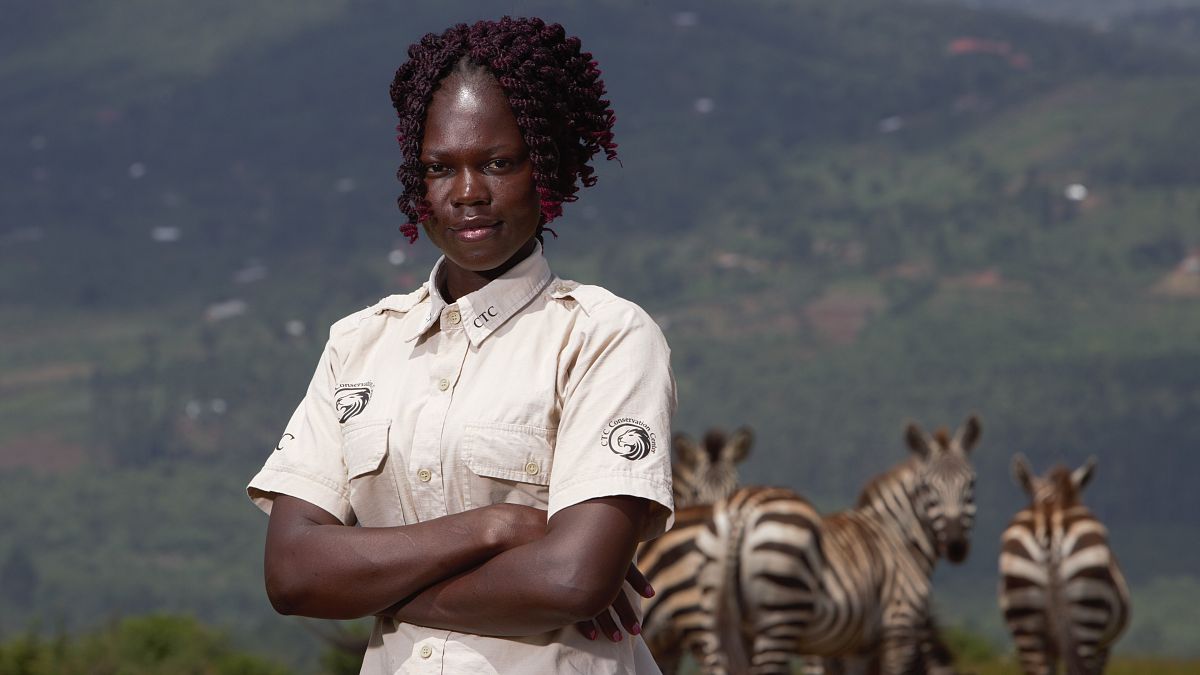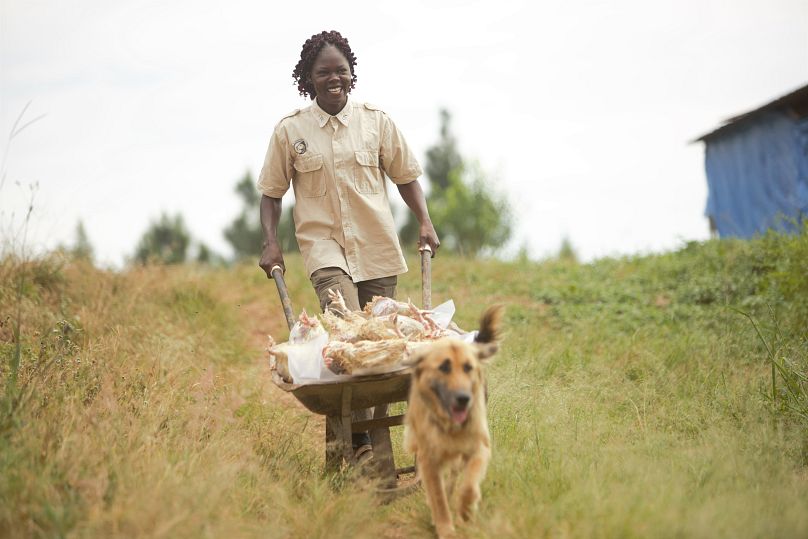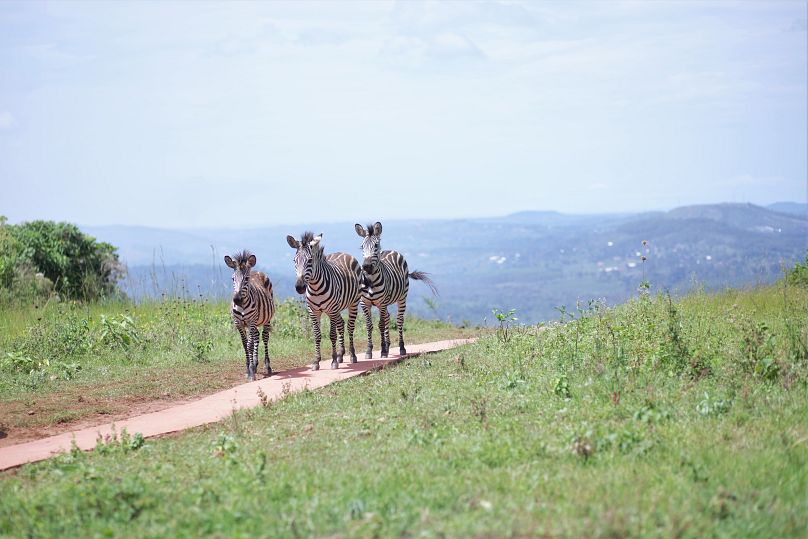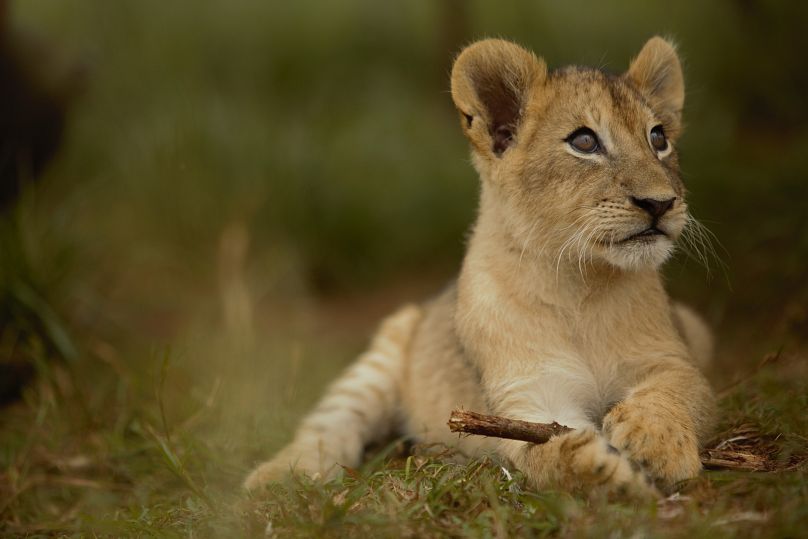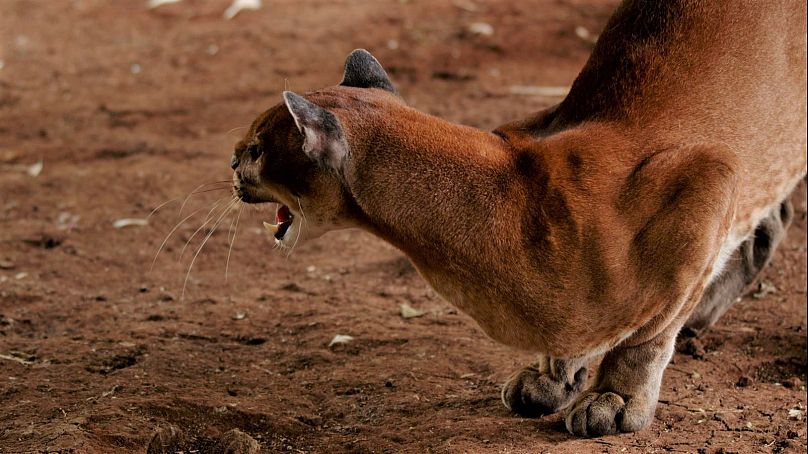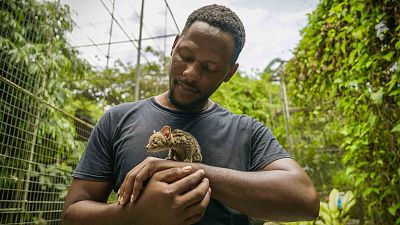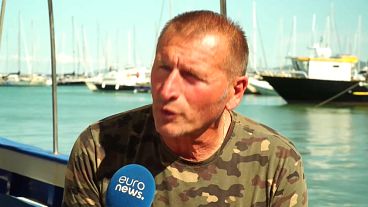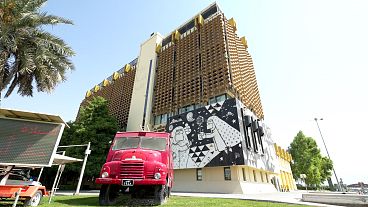In partnership with Media City, Qatar
SCENES shines a spotlight on youth around the world that are breaking down barriers and creating change. The character-driven short films will inspire and amaze, as these young change-makers tell their remarkable stories.
Wildlife populations in Uganda suffered huge losses between the 1960s and 1980s as political conflict and lack of governance saw a rise in poaching, trafficking and human invasion of natural wildlife areas. But in recent years, the animal population has slowly recovered, thanks to the conservation efforts of wildlife sanctuaries.
One such sanctuary is the CTC Conservation Centre, which opened in 2015. It is home to lions, hyenas, wildcats, tortoises, iguanas, foxes and even a crocodile or two.
Handling the animals
Akello Holly Oliver is a wildlife handler and conservationist at the Centre. An animal lover from a young age, she is passionate about animal conservation.
"Every day, it's exciting because you get to learn different kinds of things," Akello tells SCENES. "What you thought you'd already learned about this animal will surprise you tomorrow."
For Akello and her colleagues, every day revolves around the animals, from feeding them to identifying if they need medical attention.
Kiya Martina is one of the centre's vets. Her job isn't just about treating sick animals but is also about preventing illness. She explains: "They get vaccinations against all types of viruses and bacteria diseases."
Animal enrichment is also significant – ensuring the animals have enough space to remain as stimulated as they would in nature.
"We make the animal enclosures as close to those in the wild by doing enclosure enrichment. There are those animals that live in the open savannah. The zebras are in 12 acres of land, and it's open." adds Akello.
Another way the team keeps the animals happy is by hiding their food in different places, encouraging them to use all their senses to find food just as they would in the wild.
Sustainable Conservation
Thomas Price founded CTC Conservation Centre, intending to become Uganda's leading privately-owned Conservation, education, and tourist facility. Thomas believes Conservation should be commercially and financially sustainable.
He and the rest of the team work closely with the governmental Uganda Wildlife Authority, which aims to conserve, economically develop, and sustainably manage the wildlife and protected areas of the East African country.
The centre accepts animals from all over the country, usually when there are reports of human-wildlife conflicts, such as wild animals feeding on livestock. In these instances, the CTC Conservation Centre steps in to offer a sanctuary for the wildlife.
"We have two very large crocodiles. One of them was a man-eater and supposedly ate three fishermen. The Uganda Wildlife Authority captured him and asked us if we would like him." continued Thomas.
Human-wildlife conflict
Although animal populations are slowly recovering in the country, a need for more awareness about the importance of local Conservation remains a significant problem.
Akello is working hard to educate the local communities. "I talk to them about the importance of wildlife and how they can coexist," she says.
And it is working. "Ugandans are more involved in Conservation these days and are more exposed. Communities have been rescuing animals like the pangolin to bring them here for safe custody." Akello adds.
"In other places, a lot of poisoning is happening. You find human activities like poaching and illegal wildlife trade. The animals that you hope to see in the wild, you don't find them anymore." Akello explained.
Part of her role at the centre is all about education. Akello guides tourists and provides information about the different animal species at CTC. Her hope, she says, is that "By the time someone leaves, they go back with a positive mindset towards conservation."
Into the wild
While the centre provides a vital space for rescued animals, it's also successfully breeding indigenous species, like the African Golden Cat.
"We are pushing for some captive-bred animals to be released into the parks and other protected areas in collaboration with Uganda Wildlife Authority," explains Thomas.
He adds, "By breeding wildlife, we try to create a sustainable environment for them where we have the opportunity to have excess offspring, which we can reintroduce back into the environment."
But the centre must still be cautious about where animals are released. "We have to conduct a full environmental impact assessment. We won't release something which then just will be poached again there." said Thomas.
Positive impacts
Akello says, "Conservation is everyone's role. One of the future goals is carrying out research and documenting this research so that people can easily access the information about these wild animals, so that more people are involved in Conservation, and we can conserve for the next generation."
The team are aware of the challenges of sustainable animal conservation. Problems like poaching and environmental encroachment haven't gone away. However, their work to raise awareness of the importance of Conservation is positively impacting local communities. Ultimately, because of their efforts, these Ugandan animals' future looks much brighter.

